Featured Panoramic Photo Above:
Classic Charles Conlon photo of Ty Cobb sliding into Jimmy Austin
Baseball History Comes Alive Now Ranked As a Top Five Website by Feedspot Among All Baseball History Websites and Blogs!
(Check out Feedspot's list of the Top 35 Baseball History websites and blogs)

Guest Submissions from Our Readers Always Welcome! Click for details
Scroll Down to Read Today’s Essay
Subscribe to Baseball History Comes Alive for automatic updates (sign-up block found in right side-bar)
As a Free Bonus for subscribing, you’ll get instant access to my two Special Reports: Memorable World Series Moments and Gary’s Handy Dandy World Series Reference Guide!
Babe Dahlgren Photo Gallery
Click on any image below to see photos in full size and to start Photo Gallery:
My Interview with Matt Dahlgren, Grandson of Babe Dahlgren, the Man Who Replaced Lou Gehrig
We always enjoy it when we’re contacted by a relative of a former major leaguer. In this case, it’s even more special. I recently conducted an interview via e-mail with Matt Dahlgren, grandson of Babe Dahlgren, the ballplayer who replaced Lou Gehrig, bringing his consecutive game streak to an end.
Matt is understandably very proud of his grandfather, a fine ballplayer who handled this difficult assignment with class and dignity. Before I get to the interview, here’s a little background information about Babe Dahlgren from some of my previous essays:
The Yankees Won The Game That Day, But Nobody Cheered…
May 2, 1939 will always remain one of the saddest days in baseball history. Lou Gehrig took himself out of the Yankee line-up before a game at Detroit between the Tigers and the Yankees. His 14-year, 2,130 consecutive games streak finally came to an end. Babe Dahlgren, the man slated to replace the “Iron Horse,” was
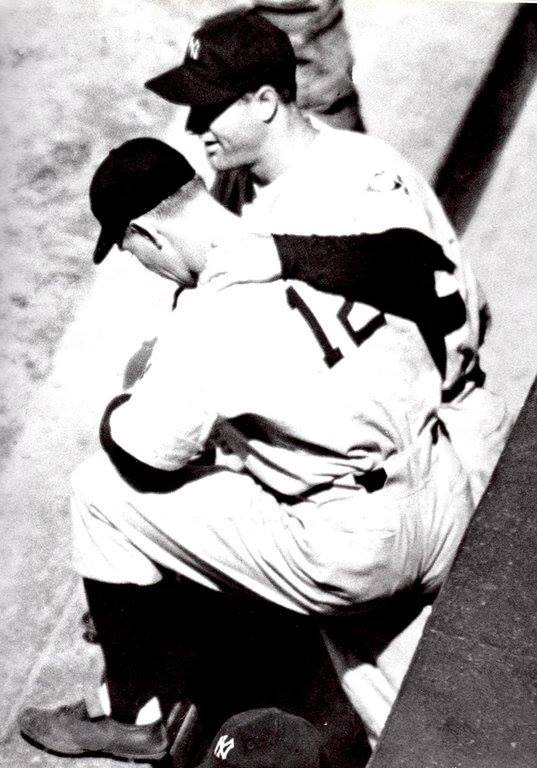
stunned when he heard about the decision, and needed some encouragement from Lou before he could take the field. On that day Dahlgren had a homer and double in the Yankees’ 22-2 rout of the Tigers, but nobody really cared about the game. All thoughts were on Lou Gehrig.
Babe went on to hit 15 home runs and drive in 89 runs for the season. His career spanned 12 years and he hit .261 with 82 home runs and 569 RBIs. Dahlgren was known as a slick-fielding first baseman and was considered by many the best defensive first basemen of his era.
The Vicious Rumor That Severely Damaged His Career
In 1941, a vicious rumor was circulated that Dahlgren smoked marijuana. According to grandson Matt Dahlgren, it was started by Yankee manager Joe McCarthy. The rumor tarnished Dahlgren’s reputation around the major leagues. He was traded to eight different teams between 1940 and 1946 even though his defensive skills were extraordinary.
After discovering the existence of the rumor in 1943, Babe Dahlgren became the first major league player to take a drug test for a non-performance-enhancing drug. He did so voluntarily to discredit the rumors circulating at the time. The tests were all negative, refuting the charges of marijuana use. Babe Dahlgren spent decades trying to uncover the source of the rumor and to clear his name, a crusade that was later picked up by his grandson, Matt Dahlgren.
Here’s my interview with Matt, slightly edited for space constraints:
GL: Can you tell me a little bit about Babe’s family?
MD: Ellsworth Tenney “Babe” Dahlgren was born on June 15, 1912 in San Francisco, CA. His father, Peter, died in 1915. His mother remarried when Babe was around six years old. Around that time his stepfather took him to a PCL game in San Francisco. Babe was in awe of the players, the colors in the uniforms and all the happenings at a ballgame. He asked his stepdad what the players did for jobs. “This is their job.” Right then and there, Babe decided that he wanted to be a ballplayer.
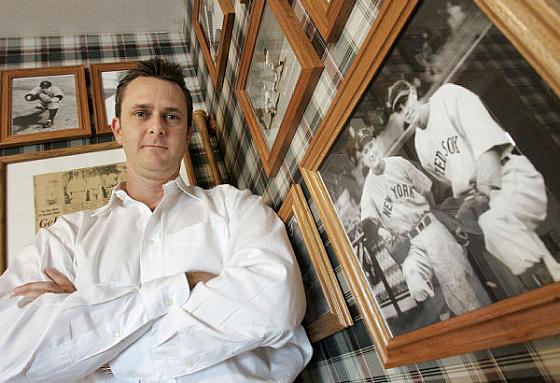
GL: Do you know how he got the nickname “Babe”?
MD: His stepfather started calling him “Babe” at a young age. As he honed his skills as a ballplayer, the kids all referred to him as Babe – perhaps because he was good and Babe Ruth was the biggest star in the game.
GL: In general, what was it like growing up in a family with a major leaguer, especially one of that stature?
MD: As a young boy he was just grandpa. But as I got older, the more I listened to his stories and saw old photos etc., the more hooked I got. He knew I loved the game, and he was always there to talk about it and help me – ALWAYS encouraging.
GL: In general, what kind of man was he?
MD: He was the greatest – a patriarch if there ever was one. We all refer to him regularly to this day. He was a loving husband, father and grandfather – always with a smile. He was a hard worker and taught me a lot about work ethic. But he had a tough side to him too. He didn’t grow up with much and had to fight (literally) to get ahead. You never wanted to cross him. He never shied away from a fight in all his life.
GL: I know you had a nice relationship with him, can you elaborate on that?
MD: I had a wonderful relationship with him. Whenever we had breaks from school, I’d always spend days at a time at his house. We’d work outside together, talk hitting, and I’d listen to stories not only about baseball, but life too. My siblings and I were all very lucky to have him as a grandfather.

GL: Did he ever talk to you about Lou Gehrig and the game in which he replaced him?
MD: Gehrig was Babe’s idol growing up – had pictures of him drawn on his school binder. He never dreamed he’d be the one to someday replace him. It was Coach Art Fletcher who quietly told Babe he was playing on May 2, 1939. It was the ONE day in Babe’s life he didn’t want to play baseball. He wanted his idol’s streak to continue. It was huge pressure – stepping into the biggest shoes in sports. He went up to Gehrig several times late in the game and asked him to get in to keep his streak alive. Gehrig just replied, “You’re doing great, Babe.”
Those Yankees teams were a tight group – everyone got along. Gehrig was a bit of a loner – he was closest to his roommate, Bill Dickey. I do know that Babe considered Joe DiMaggio to be the greatest player he ever played with or against. He played against Joe in the PCL too and saw him put together a 61 game hitting streak in 1933.
GL: What about Babe Ruth?
Babe’s rookie year was Babe Ruth’s last year (1935). Both Babe’s played for the Boston teams. Back then, the two teams would play a series at Fenway & Braves Field right before the regular season began. It’s the only time my grandpa played against Ruth.
GL: Has there been any new info about the McCarthy rumor? I remember the incident had its origins at Joe DiMaggio’s wedding and the feud between McCarthy and Lefty O’Doul.
MD: With regards to DiMaggio’s wedding (November 1939), a lot of Bay area ballplayers were there; among them Babe and Lefty O’Doul. I believe Babe spoke with O’Doul there about working with him on hitting before he left for spring training in 1940. O’Doul agreed to work with Babe and the two got together in February 1940. After working with Babe (which was covered in the papers throughout the country) O’Doul said, “I can’t understand how guys getting big money in the majors as managers can’t straighten out some of these noticeable kinks.”
It was a direct shot at Joe McCarthy, who didn’t like O’Doul to begin with. McCarthy had thin skin and when Babe arrived at camp and got off to a hot start leading the team in HR’s during the spring, McCarthy resented it and took it out on Babe, blaming him for not winning the pennant in 1940 because of two errors Babe made late in the season. So, just before spring training in 1941, Babe was sold to the Braves, which left the writers (who most thought Babe was the best defensive first baseman in the game) scratching their heads. McCarthy started the rumor of Babe smoking marijuana in an attempt to justify the decision to sell him. Unbeknownst to Babe, this RUMOR began to spread throughout baseball as early as June 1941.
I recently found an article in the NY Daily News from 6/30/41. Bob Quinn, the president of the Braves said, “Stengel may not say it, but I’m saying it: We let Dahlgren go because we found out that there were things about him which we figured would not help us win.” What could he possibly be referring to?? Keep in mind, when the Braves sold Babe to the Cubs on 6/15/41, he was leading the Braves in HR’s (7) and RBI’s (30). From the day he became a Cub in 1941, he led them in HR’s (16) and RBI’s (59). He was given a raise and told by manager Jimmie Wilson that he was a lock at first base for 1942. But shortly into the ’42 season he was sold. Things all started to snowball there. The RUMOR was really beginning to threaten Babe’s career and he wouldn’t even know it until 1943. My book, Rumor In Town, spells all of this out.
GL: Can you tell me your general reflections on Babe Dahlgren and his career?
MD: Of course, Babe will always be tied to Lou Gehrig and remembered for being the man who replaced him. The more I research him – which I’m constantly doing – I realize how great he was as a fielder even going back to his early days in the PCL. The way the writers paint pictures of his defensive ability and the adjectives they used throughout the years to articulate his fielding leaves little doubt that he was incredible around the bag. I wish I could’ve seen him.
Something else I wish Babe would get credit for is the use of film as an instructional tool. Today, every professional player (and even amateur) has the ability to study their swing or pitching mechanics from game to game…at-bat to at-bat. Babe pioneered this in 1964 when he made a 90-minute movie on hitting and pitched it to Charlie Finley. Finley was so impressed, he hired Babe as hitting/film coach for the 1964 Kansas City A’s. This was the first team to do this, and it was Babe’s idea. Now, every team has a film room and it’s become one of the most important aspects to improving and enhancing a player’s performance.
GL: Any personal family tidbits or anecdotes you’d like to share?
MD: There are a lot of little things that I carry with me to this day that I learned or picked up from Babe. I think the most important thing, and something I’ve passed down to my kids, is that if you want something in life, you gotta go out and get it. Babe used to equate it to fielding, how a good fielder makes his own hops. He would always tell us that in life we need to make our own hops – don’t let the ball (life) play you, you play the ball (life).
GL: Can you tell me a little information about yourself?
MD: I currently live in Sammamish, WA, with my wife and three daughters. In my spare time, I coach select 12U softball and enjoy every minute of it. I’ve written two books: Rumor In Town: A Grandson’s Promise to Right a Wrong and The Flannel Past – both are available at mattdahlgren.com.
Thanks Matt!
Thanks Matt for sharing this interesting information about your granddad, Babe Dahlgren. He was a fine ballplayer and an even better man. He’s earned a special place in baseball history, handling with class and dignity the difficult role fate assigned to him as the man who replaced Lou Gehrig.
Gary Livacari
Information: Excerpts edited from e-mail exchange with Matt Dahlgren

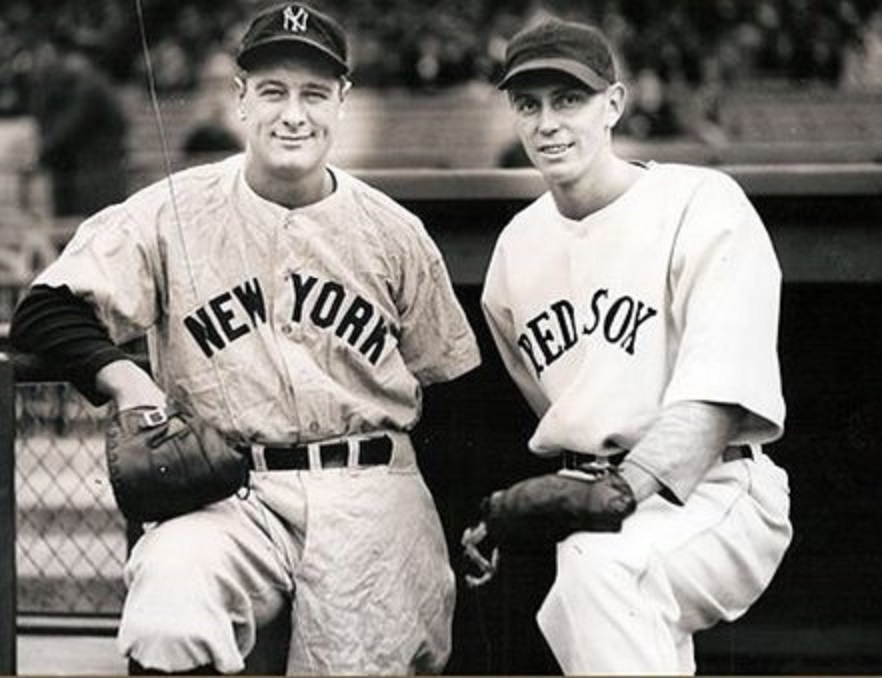
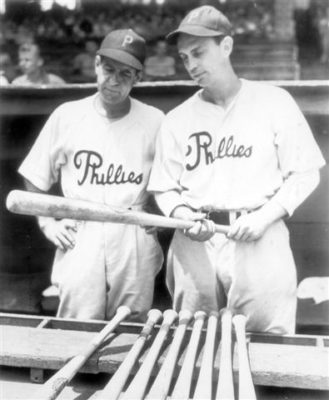
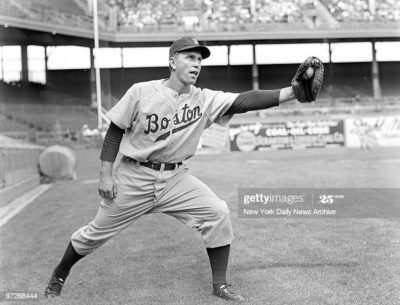
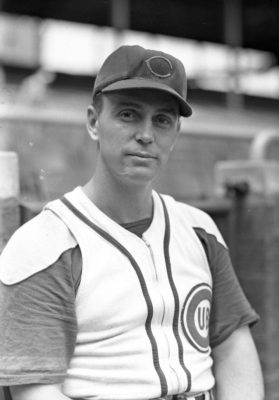
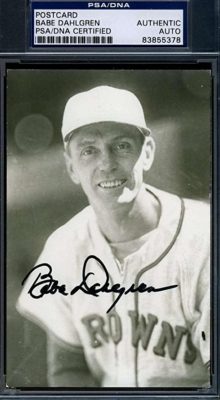
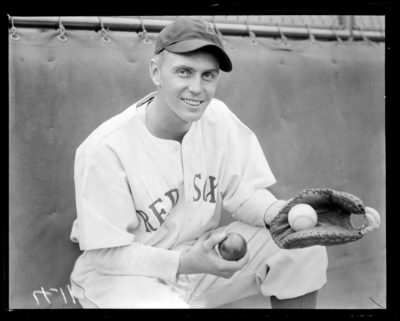
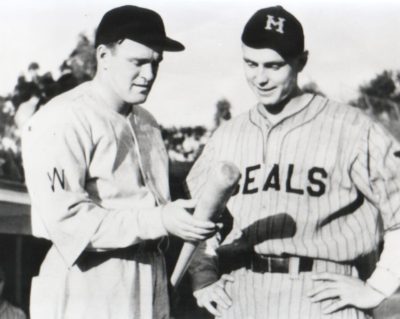
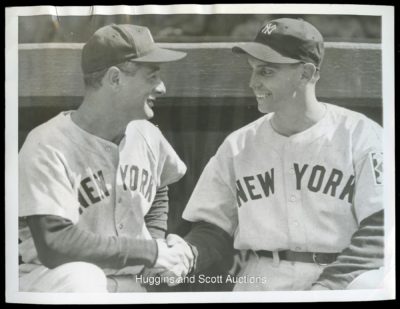
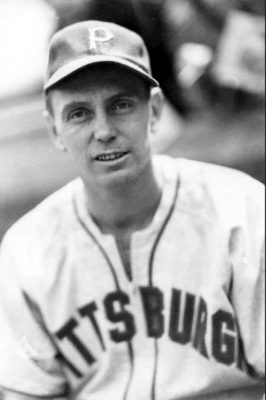
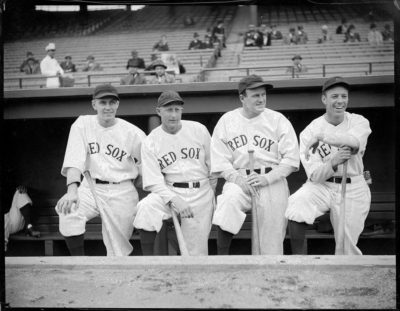
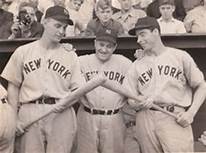
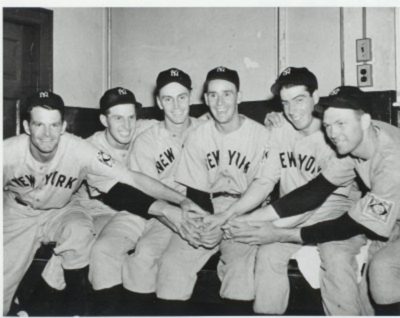
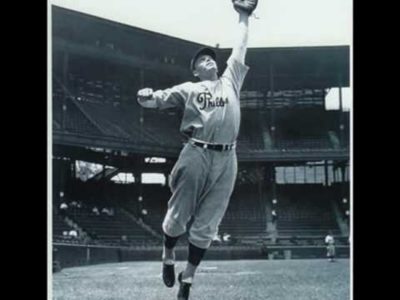
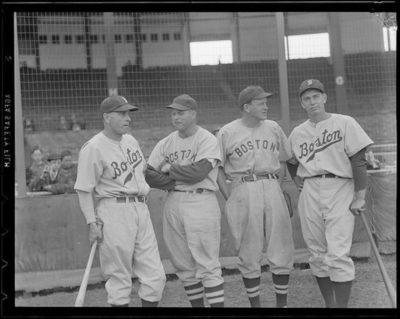
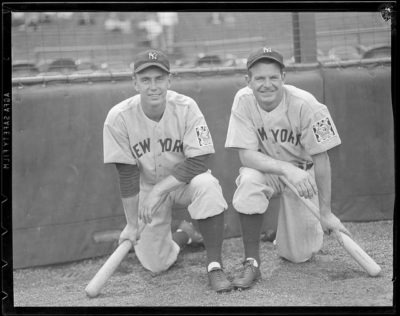
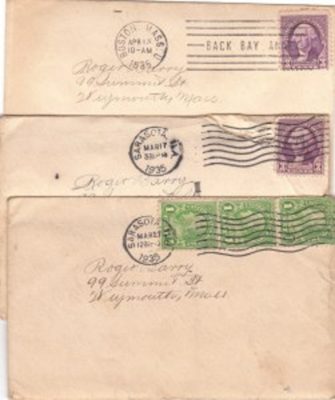
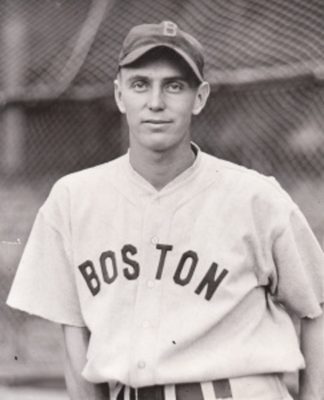
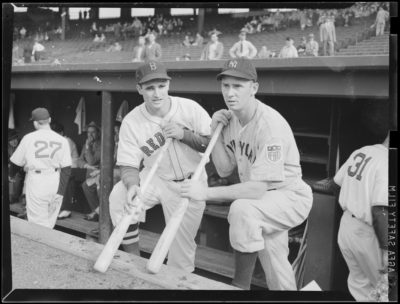
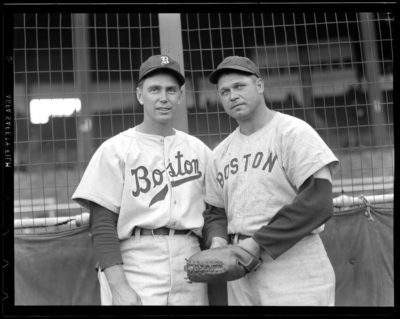
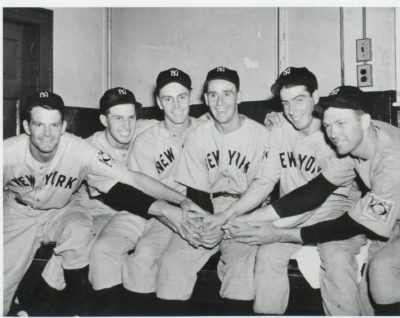
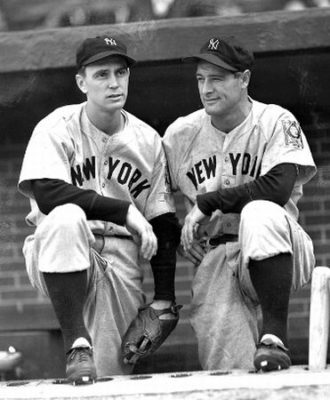
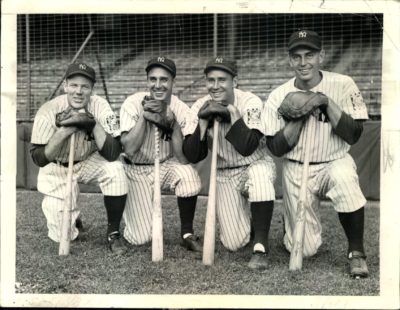
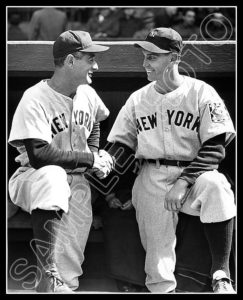
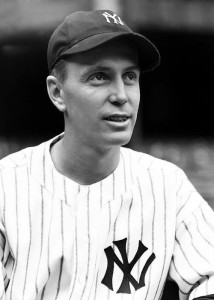
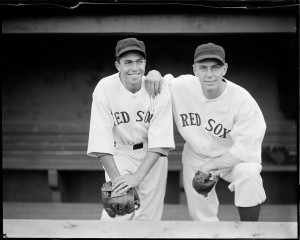
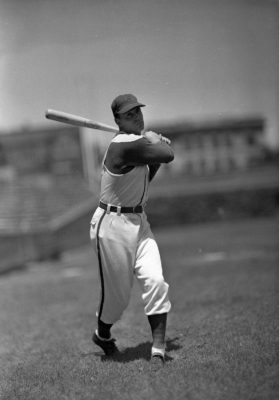
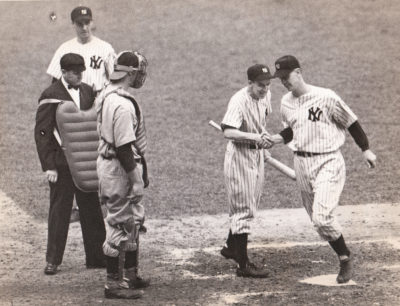
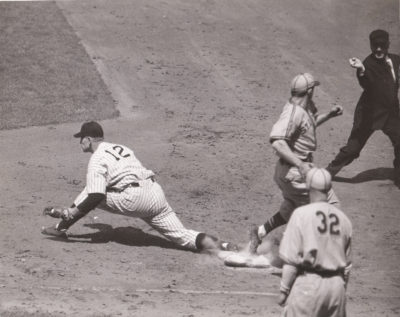
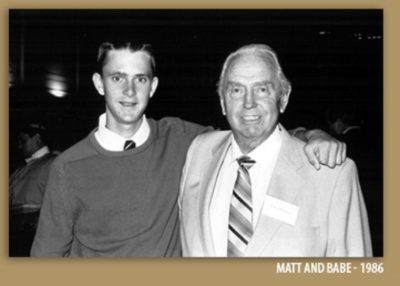
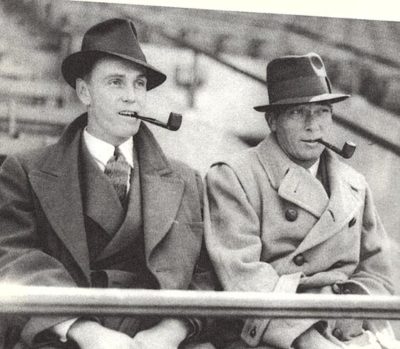
Damn interesting story.
Thanks Matt, for consenting to the interview with Gary about your Grandfather. Babe Dahlgren had a very solid baseball career, even if you subtract his awesome connection to Lou Gehrig. And thank you, Gary, for another terrific essay. Baseball oral histories are my favorite type of subject.
Thanks Dave!
Very enlightening interview, Gary. It’s a real shame the marijuana rumor gained such traction. Back in the day it was considered shocking when the actor Robert Mitchum was thought to be taking marijuana. My parents were sure that’s why he had that sleepy eyed look!
Great Babe Dahlgren baseball analogy shared by Matt about making your own hops in life. “Don’t let the ball (life) play you, you play the ball (life).”
Best, Bill
I read your book about your grandpa and thought you did a great job. Your grandpa is very proud of you, I’m sure. MLB should exonerate your grandpa regarding the terrible rumor to at least give some closure to your family. Thanks and I wish you and your family all the best.